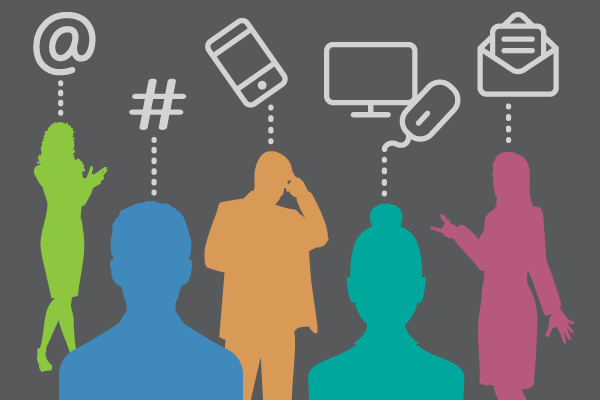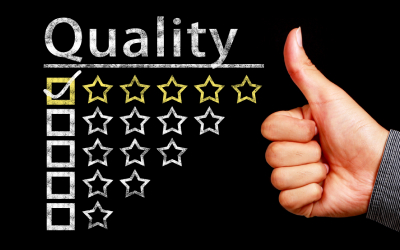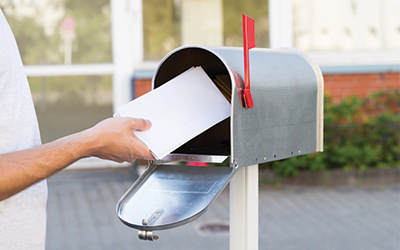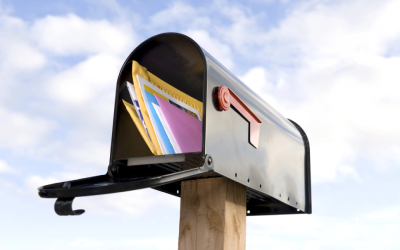An important tool in B2B campaign planning is buyer persona development, backed by real world customer and prospect insights. Understanding and embracing how the target’s habits, behaviors, and preferences intersect with their roles, goals, and pain points in both business and personal life minimizes the chances of wasting valuable mailing list data.
Nothing is more frustrating to direct marketers than launching a B2B campaign featuring a valuable, relevant offer, only to suffer poor response. The culprit may be less the message than the medium. Business recipients may have channel preferences, and only respond to email, SMS, a phone call, or physical direct mail. A campaign may also underperform by employing too few channels. It can be risky relying on one-and-done, hit or miss contact versus a broader, sequenced approach. (Penny wise, pound foolish?) It is possible to discover where these issues may lie and avoid them.
Your Offer Can’t Fly Out The Door, Until You Get Your Foot In The Door
This means understanding which channels of B2B direct marketing actually reach customers and prospects based on their preference. Some audience members may favor email, while others may respond to physical mail, digital ads, SMS, or telephone contact. Some may reserve time at work for B2B outreach while others may actually do so at home (especially now that work/home boundaries are blurred). User choices can be collected by conducting interviews, fielding surveys, or via form completions. As a target cohort grows, so will the range of channel use profiles, and may justify sub-personas based on that fact.
“Because That’s Where The Money Is.” – Willie Sutton on why he robbed banks
Be where the buyers are. Reach them where they browse, collect information, and purchase. So before committing resources to a high quality mailing list, direct marketers have to do their homework. If the persona is not targeted in accordance with how the recipient chooses to receive B2B direct marketing outreach, the offer risks being invisible. Even if a marketer sends a relevant, consistent message across a multi-channel front, the effort will be hamstrung from the start if the right message is sent via the wrong channel.
Personas segmented by channel preference research may include insights like these:
- 70% of existing customers in marketing positions maintain a LinkedIn account
- Our mailed newsletter sample got the most subscription responses via 800#
- Fewer than 10% of C-suite target want to receive a phone call as first contact
- When offered a future contact preference 85% of website visitors chose email
Campaign deployment penetration can increase when buyer persona development is informed by channel preferences. Look alike matching with an existing customer database can then further refine both the new prospect list and the customer database. Here are the sort of channel-centric details these practices may yield to refine almost any persona (nameonics make each persona a bit easier to remember):
- Paul Takes The Call – follow up with email or sales literature
- Gail Opens Direct Mail – follow up with email or phone call
- Rex Does Texts – follow up with call, link to video or site page, sales literature
- Emma Answers Email – follow up with direct mail, call, or SMS
In each case the primary contact channel hands off to followup channels that can create opportunities to engage, assist, and possibly close.
The Medium Is The Messenger
There is a choice of whether to blanket customers and prospects with a broadside via every available channel, or approach each one according to their individual preference. Preferences may have nothing to do with marketing, but rather what they are doing, where they are, how much time they have. After all, people may get their news from a printed newspaper, a news app, cable news, radio, or podcast depending on their preference and opportunity. Same with books…printed, ebook, or audiobook.
Channel usage may signify different points along the buying journey, ranging from initial browsing to in-market readiness. Browsers may be intrigued by physical mail, then pulled along further by a followup email, text, and perhaps a call. In each case the recipient should be made aware that followup will ensue. The option to decline further contact should be offered in either email, SMS, or phone. This presents a choice of whether to blanket customers and prospects with a broadside via every available channel, or approach each one according to their individual preference. It is not unwise to segment B2B persona development to fit different stages of the buying journey.
Of course specific data elements are available to send messages via all major channels. It goes without saying that contact data must be fresh and accurate. Good, clean data is not cheap, so insistence on data quality is Good Business 101. High quality data combined with insightful personas illuminate the direct path to successful contact and fruitful response. Append contact selects absent from customer databases and prospect lists. Databases are available that enable multi-channel targeting, such as postal plus email, or mobile phone numbers. Go further when buyer persona development includes communications channel preferences. Remember, it takes two to make a sale. Don’t waste money on contact data that is unable to hit the mark. Instead, invest in data and deploy campaigns that acknowledge the message consumption preferences of the audience, to better serve their needs, and your bottom line.




